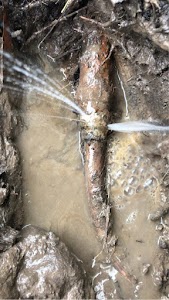Rain Leak detection, We Can Help
The main function of a roof is to protect your home from rain. If the roofing material does not perform its function, it will lead to leaks.
There are three main types of leaks: rain, snow, or shimmering, caused by microcracks in the roofing and accompanied by moisture seeping through the insulation.
Damage to the roof
Caused by falling branches, which often occurs in strong winds in Melbourne.
- Wear and tear of the coating occurs as a result of low-quality material or the expiration of the manufacturer’s specified period of operation.
- Leaking roof joints to vertical surfaces. At the points of contact of roofing material to the pipe, walls, and other elements, there is most often a violation of waterproofing.
- Failure to comply with the rules of installation of the roof. Violations of technology on the device of the roof will lead to leaks after the first downpour, and to eliminate this type of defect requires a considerable investment of time and effort.
Google Reviews

There is no leakage, but the ceiling is wet
To other common problems include incorrectly made joints between the sheets, sliding elements of the roof and their tight adjacency to the ventilation chimneys, chimneys. Also, leaks can occur in places where roofing material is attached to purlins with screws or nails. If, after finding wet spots on the ceiling and examining the roof for any defects found that there are no leaks, it may be all about condensation. Such a problem can occur in rooms with high humidity, insulated attics, where, in the absence of ventilation, moisture is not able to escape outside, and settles on the ceiling, flowing down the walls.
The reason for this is:
- Poor insulation of the room
- Mistake in laying waterproofing, ventilation gaps, a couple of insulation layers
If there is no leakage, you should also pay attention to the slope of the gutter. If its angle was not calculated correctly, the water will flow over the edge during heavy rains.
Finding roof rain leaks
For quick and most accurate detection for the leak problem area on the roof is best to seek help from professionals who, using a special acoustic scanning camera for leaks detection, will quickly determine the status of the roof, the presence on its surface those or other defects, and establish the amount of necessary repair work.
In the roofing material.
When looking for the problem area, you need to remember that the leak is not always located above the wet spot on the ceiling. Water, seeping through the roof, can move for a long time inside the slabs, and in the weakest place will begin to ooze onto the ceiling.
The algorithm for finding the problem area is as follows:
First of all, to find the leak, the attic must be inspected. This should be done when it is raining.
After finding wet spots in the attic, you should inspect the purlins and rafters. If on their surface there are wet paths, their direction will be able to determine where the water is flowing from.
After examining the attic, you should carefully examine the roof from the outside. Detecting signs of corrosion, cracks, mechanical damage, distortions and bends in the roofing sheets, as well as depressurized joints will help, to understand why the roof is leaking.

